Keeping our Great Barrier Reef great
Expert reviewers
Essentials
- The Great Barrier Reef has been suffering from several pressures for years.
- Coral bleaching is the biggest threat to the reef.
- The impacts of climate change and other human activities are all having a compounding effect on the reef.
- Concerted and careful management can help to preserve regions of the reef that are still in good shape, which will be crucial to the reef’s long-term survival.
It’s clear from news headlines the world over that our Great Barrier Reef is in trouble. The mass coral bleaching event of 2016 has affected 93 per cent of the reef, and has struck particularly severely in its northern, most pristine areas.
But it’s not just bleaching that’s troubling the reef. Hard coral cover on the reef in the 1960s accounted for around 45–55 per cent of the area of the entire reef. By 1986, this figure was down to 28 per cent, and in 2011 it was at 14 per cent.
The major causes of this decline include physical destruction from tropical cyclones, stress caused by warmer ocean temperatures, poor water quality and predation by the crown-of-thorns starfish.
The Australian Institute of Marine Science carries out regular monitoring of the Great Barrier Reef. Although a recent analysis from 2012–15 showed that while hard coral cover was reasonably healthy in regions of the central and southern reef, the northern regions showed further decline where an intense tropical cyclone and continued predation from the crown-of-thorns starfish hampered recovery.
This steady state of decline was the backdrop for the unusually warm waters brought by the major 2015–16 El Niño event that led to mass coral bleaching across large areas of the reef.
So what are the biggest threats the Great Barrier Reef is facing, and what can be done to try and address them?
Climate change
Climate change that is resulting from increased concentrations of carbon dioxide and some other greenhouse gases in the atmosphere poses a number of threats to the Great Barrier Reef.
Bleaching
A large coral structure is actually made up of hundreds of tiny coral animals, called polyps. These animals build the coral skeleton to form the structures that make up the reef. But they can’t do it alone—living inside every coral polyp are zooxanthellae, a type of algae that lives with the coral, and uses photosynthesis to produce its energy. The zooxanthellae’s waste products provide energy and nutrients to the coral polyps. So it’s a win–win situation—the coral polyps provide a safe home for the zooxanthellae and the zooxanthellae provide nutrients for the coral. The photosynthetic pigments of the zooxanthellae also provides the colour to what would otherwise be a stark white coral skeleton.
However, in times of stress this symbiotic relationship can break down. Stress can be caused by water pollution and sediment loads, but the biggest problem is increased water temperatures, particularly if they come hand in hand with calm, stagnant conditions. The zooxanthellae start to produce chemicals that are toxic to the coral polyp, and the coral expels the zooxanthellae. This leaves the coral looking white and bleached, and without its important food source. If the stressful conditions cease, the zooxanthellae can return, but if they are absent for too long, the coral will die.
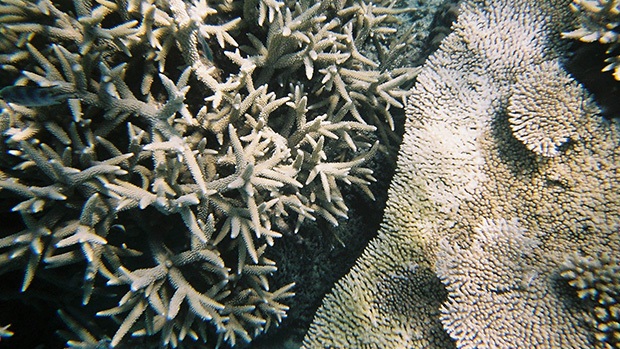
Coral bleaching is one of the biggest threats faced by the Great Barrier Reef. The slow yet inexorable rise in ocean temperatures that come with a warming planet mean that average temperatures will become ever closer to the bleaching threshold, and bleaching events will occur more and more often. Coral reefs the world over have been affected by mass bleaching since 2014.
Ocean acidification
As more and more carbon dioxide (CO2) accumulates in the Earth’s atmosphere, more also accumulates in the planet’s oceans. The CO2 dissolves and forms carbonic acid. This does not mean that the oceans are turning into a corrosive vat of battery acid, but it does lower oceanic pH, making the oceans more acidic than they would be otherwise. More importantly, the lower pH changes the balance between dissolved carbonic acid (H2CO3), bicarbonate (HCO3) and carbonate (CO3), ultimately reducing the abundance of dissolved carbonate in the water. This makes it harder for animals like corals and molluscs that need a plentiful supply of carbonate to build their calcium carbonate (CaCO3) skeletons and shells. In addition, if pH drops too low, calcium carbonate will begin to dissolve.
A recent study has isolated small regions of the reef and manipulated the chemistry of the seawater to be closer to what it would have been in pre-industrial times. They found that the coral growth was around 7 per cent higher under these conditions, indicating that the reef is already being affected by ocean acidification.
Extreme weather events
Tropical cyclones and river flood events are naturally occurring disturbances to the reef. Given time—10 to 20 years—with no other disturbances, the reef can recover from the destruction these events can cause. Coral larvae like to settle on clean, hard surfaces, and without the breakage and scouring provided by storm events, there wouldn’t be much suitable real estate for new colonies to establish. However, the increased intensity of storm, tropical cyclone and flooding events that is expected to come in the future as a consequence of climate change won't benefit the reef system.
What can be done?
The only way we can hope to combat the threats posed to the Great Barrier Reef by climate change is a rapid and dramatic reduction in emissions from fossil fuels. In the meantime, the ability of the Great Barrier Reef to survive into the future is going to depend on concerted efforts to preserve and maintain those areas of the reef that are still in good shape, while at the same time giving impacted reefs a fighting chance to recover. Reef resilience to all aspects of climate change will depend on the reef being able to maintain its complex ecosystems and being protected from the additional threats of water pollution and overfishing.
Water quality
The Great Barrier Reef catchment area
A crucial thing to remember is that even though the reef is offshore, activities on the land can have a huge impact. The reef receives the discharge from rivers in catchments covering 424,000 square kilometres of land.
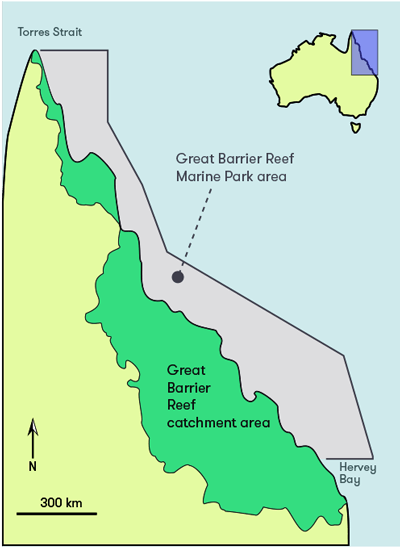
As the land within the Great Barrier Reef catchment is mainly used for agricultural purposes, the rivers that carry its runoff contain sediment and nutrients. The rivers’ loads are affected by changes in land use, urbanisation and agriculture, and flood events, which can have significant and intense impacts upon the reef system.
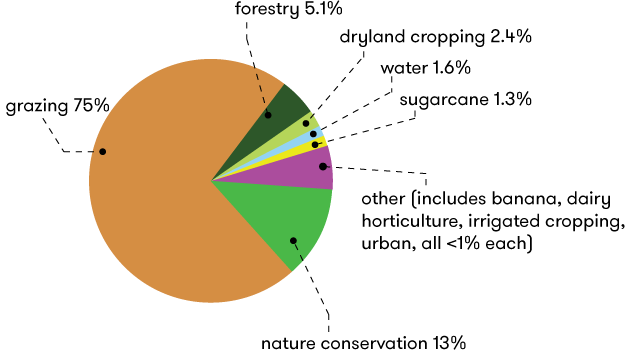
Water quality plays a huge role in coral reef resilience. For example, after the mass bleaching event in 1998, around 60 percent of coral reefs in the Seychelles recovered despite losing around 90 per cent of their coral. The reefs that were able to recover were those that were unaffected by pollution and still had good water quality, and had healthy populations of young corals and fish.
Sediment
Sediment in the reef isn’t a bad thing in itself—it’s a staple part of the diet of many fish. Parrotfish and surgeonfish eat algae and nutrient-rich sediment from the reef surface. They process it and then deposit it in neat and tidy packages tucked away in nooks and crannies within the reef. They’re like very efficient vacuum cleaners: parrot fish (Scarus rivulatus) perform this clean-up regime every 27 days.
The problem is when there’s too much of it. If the reef becomes overloaded with sediment, the fish can’t keep up. The sediment builds up, eventually smothering the corals and the rest of the reef. The past 150 years has seen the amount of sediment washed into the Great Barrier Reef region increase by 4–5 times, and up to 10 times in some areas.
On an even more localised level, the near-shore reef at Orpheus Island has seen sediment loads increase by around 37 times over the past 10 years.
The parrotfish have given up on trying to clean up this reef, and rabbitfish, another reef-cleaning fish, have virtually stopped as well. This has resulted in a reef that’s become smothered with sediment, and the whole system is affected.
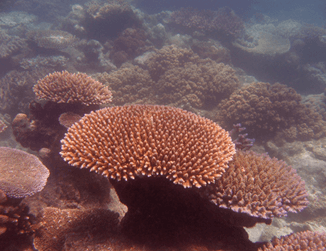
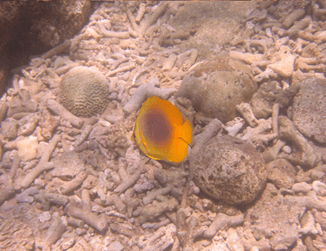
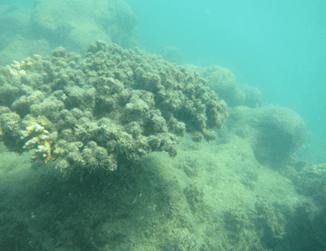
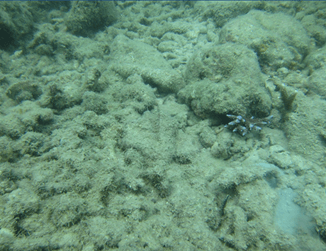
Another issue is the fine sediments, which are typically deposited on inshore reefs from rivers. These are so small they only slowly settle on the surface of the reef. While still suspended (floating) within the water, they cause a water condition known as turbidity, and it decreases the amount of light that can penetrate the water. This can impact upon seagrass ecosystems that depend up on sunlight for photosynthesis. Similarly, the zooxanthellae algae that live inside the coral animals also require sunlight for photosynthesis.
Pollutants
Along with sediment, the rivers can also deliver a range of nutrients and pollutants into the ocean. These can include pesticide and fertiliser residues from farm runoff and also some heavy metals that can all affect the metabolism and feeding habits of reef organisms.
Nutrients can also enter the reef system through groundwater that has percolated through the ground then discharges into the reef from beneath the seafloor. These waters can contain different dissolved forms of the nutrients.
The main nutrients from agricultural runoff are nitrogen and phosphorous. They can be dissolved in the water or exist as tiny particles (particulates), and in either organic or inorganic form. The difference between organic and inorganic is that the organic form is generally bound with carbon, or has an organic origin, rather than a mineral or synthetic source like some fertilisers. This controls how reactive they are within the environment. The dissolved inorganic forms of nitrogen and phosphorous are generally more problematic, as they are usually more readily bioavailable GLOSSARY bioavailableexisting in a chemical form that is easily used/consumed by living organisms to promote algae growth.
Nitrogen concentrations are a doubly serious water quality threat because of nitrogen’s role in promoting the growth of the crown-of-thorns starfish (more on these below). Pesticides (including herbicides) are a problem mainly in freshwater, estuarine areas, seagrass and coral reef ecosystems. They tend to break down very slowly, and even extremely small concentrations can be detrimental to coral health. Herbicides can affect zooxanthellae photosynthesis, causing bleaching and overall decline in coral health.
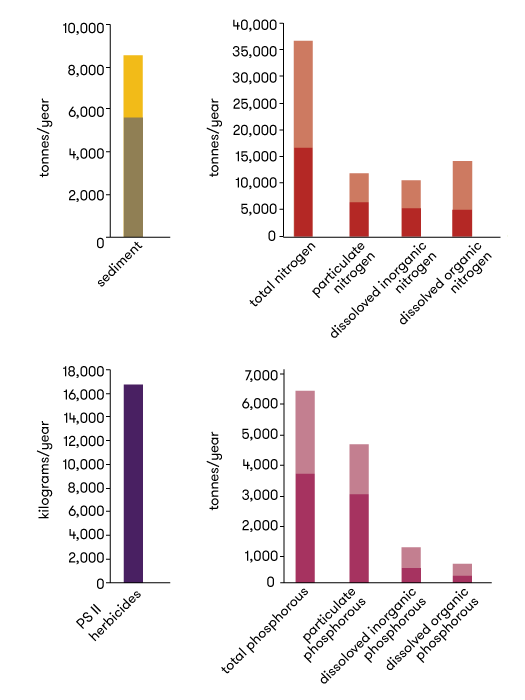
Another important part of the system are the coastal wetlands and mangrove areas. These act as massive filtering systems for the waters that enter the ocean from streams and rivers. As they intercept and slow down the flow of the waters that flow into them, they give sediments and other pollutants the chance to settle out of the water that then flows on to the ocean. Healthy vegetation along river banks is also important to prevent erosion and increased sediment loads. According to the 2014 Great Barrier Reef Report Card these environments continued to decline during 2009–2013, with a 0.1 per cent loss of wetlands (330 hectares) and a 0.4 loss (31,000 hectares) of forested areas upstream. This is obviously an area where management and protection can be improved.
What can be done?
On very small scales, it’s possible to ‘kick-start’ the fish vacuum-cleaning system by simply having divers go in and give the reef a sweep. This essentially does the fishes’ jobs for them and also gives them a chance to come back in to a more manageable work load and resume their jobs, business-as-usual. This may enable us to keep areas of reef functioning after localised disturbances.
Much bigger benefits will come from improved management of agricultural and grazing lands to prevent the sediment and other pollutants reaching the reef in the first place. With so much of the Great Barrier Reef catchment occupied by grazing and other agricultural activity, much of the current reef protection effort is geared at shifting farmers and pastoralists towards ‘best practice’ methods, with the aim of reducing the amount of sediment, nutrients and pesticides in runoff from agricultural land.
The 2014 Great Barrier Reef Report Card lists targets and progress towards land managers shifting towards best-practice methods. It also reports on sediment and pollutant loads being delivered to the reef system.
As of June 2014, the areas of land under best-practice management was variable. Reasonable progress has been made in horticultural areas, while grazing and sugarcane areas still have considerable room for improvement. With regard to sediment and pollutants, the data indicates that some progress has been made, but based on the current trajectories, at least some of the 2018 targets will not be met.
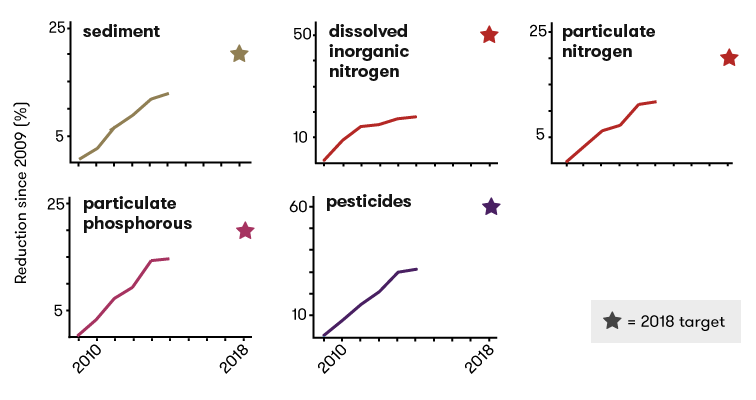
A study that examined policy measures addressing agricultural pollution in various coastal locations around the world concluded that successful methods to reduce agricultural pollution require strict (generally non-voluntary) regulation and more powerful incentives. They needed to be carried out on a large scale, coupled with a deep understanding of whole-of-ecosystem impacts and timeframes and followed up by long-term broad scale monitoring. Indeed, ‘best-practice’ management practices are yet to be taken up by some landholders in the Great Barrier Reef catchment area. This is in part due to a lack of motivation to do so in the face of limited or negative financial benefits. An approach along these lines, encompassing the entire Great Barrier Reef catchment area is required for meaningful management of the agricultural pollution in the Great Barrier Reef region.
A mixture of various measures is needed, including stricter and more streamlined regulation, changes in land use and restoration of healthy hydrological regimes, both upstream and in the coastal areas that feed into the reef region. There is no one simple or cheap solution, and the order of change required means that an approach that is based on a business-as-usual perspective is likely to fail.
One approach would be to cordon off a broader region than that currently contained within the Great Barrier Reef World Heritage Area for more stringent management. This stringent management would encompass the entire Great Barrier Reef catchment area, with a particular focus on protecting areas of the reef that are still healthy.
Dredging
Increased shipping traffic servicing the coastal ports of Queensland towns requires deep channels that the ships can travel through. In some cases, this means that the sediments on the ocean floor must be dredged up and then disposed of elsewhere. The habitat affected by both the actual dredging and then the dumping of the dredged sediments are generally soft-sediment regions, usually seagrass ecosystems. Coral reefs are not destroyed or buried as a result of the process and while the impacts are dramatic, they’re generally localised.
However, the process results in the suspension of large amounts of fine sediments, which can be transported by waves and ocean currents to different areas of the reef, contributing to persistent turbidity problems.
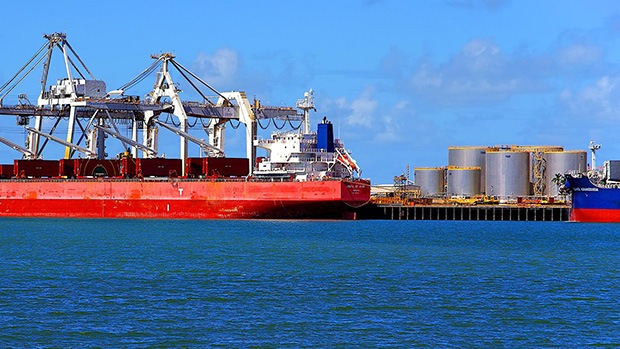
What can be done?
Policy introduced in late 2014 and early 2015 banned the disposal of capital dredge sediments—these are the materials removed during the creation of a new channel, and are usually around 500,000 cubic metres—within the marine regions of the Great Barrier Reef Marine Park. There are no such requirements for the material removed during maintenance dredging, which occurs periodically or regularly to maintain the channels. Maintenance dredging removes smaller amounts of material, but a high proportion of fine sediments.
Over-fishing
There are strict policies in place to control fishing practices on the Great Barrier Reef, with areas strictly zoned as either marine reserves, recreational fishing zones or commercial and recreational fishing areas. However, it’s debatable that these policies are effectively enforced as it’s largely left to policing by individuals. Some community members believe that a more active physical presence and enforcement by authorities is required in the nearshore, easy-to-access no-take zones.
There are also still some issues with accidental catching of protected species or non-target species which are then discarded, and some predator species are vulnerable. The removal of predators can have dramatic implications throughout the food web. Monitoring is ongoing to ensure that fish communities stay healthy and that fishing harvests are sustainable.
A recent study compared the fish communities of different zones found distinct differences between the regions. The areas that are heavily fished showed markedly decreased numbers of predator fish, like coral trout and snapper, and increased numbers of parrotfish and smaller prey fish such as damselfish.
What can be done?
The reef was rezoned in 2004 to increase the number of regions where extraction fishing activities were prohibited (no-take zones), from 5 per cent of reef areas to 30 per cent. This has resulted in healthier populations of some specific fish, namely coral trout, and lower numbers of crown-of-thorns starfish in some of these regions. However, other fish populations do not seem to have benefited greatly from the no-take fishing restrictions.
While the no-take zones can result in better coral resilience, poor water quality can overwhelm these positive steps, as can the impacts of flooding and cyclones, supporting the need for an integrated, multi-faceted approach to reef management and protection. It’s also suggested that restrictions on prawn trawling are likely to be even more beneficial to reef health and biodiversity than the no-take fishing zones.
Crown-of-thorns starfish
The crown-of-thorns starfish (Acanthaster planci) is a venomous, coral-eating starfish native to Indo-Pacific coral reefs. In a healthy reef, it has its own ecological niche and does not present a threat to the reef system. However, the Great Barrier Reef has been suffering from outbreaks of increased numbers of starfish that feed on the corals faster than they can recover. The critical number on the Great Barrier Reef is if more than one starfish is seen during a 20-minute swim, or there are more than 15 starfish per hectare of reef with moderate coral cover.
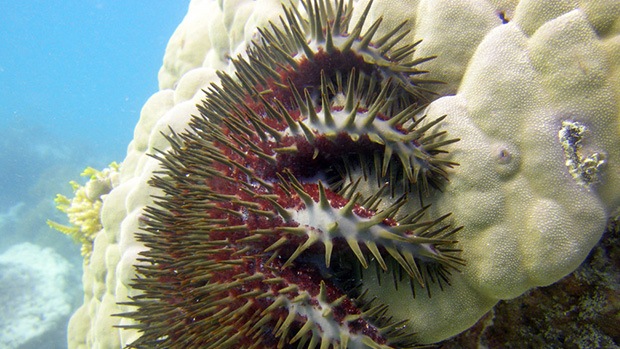
It’s thought that increased nutrient levels, such as nitrogen, within the reef waters are at least partly the cause of increased numbers of crown-of-thorns starfish. Plankton blooms, fuelled by increased nutrients (particularly nitrogen) provide abundant food for starfish larvae. This is exacerbated if the bloom occurs during the starfish spawning season of October–February.
Another possible reason behind the increased numbers of crown-of-thorns starfish is the decline of some of its natural predators as a result of fishing or shell-collecting practices. Two predators of the crown-of-thorns starfish, the humphead Maori wrasse (Cheilinus undulatus) and the giant triton snail (Charonia tritonis) are now protected.
Over the past 25 years, it’s estimated that crown-of-thorns starfish have been responsible for the loss of 1.4 per cent of coral cover per year.
What can be done?
Crown-of-thorns starfish have been monitored since the 1980s. In some cases, teams of divers are sent in to manually cull the starfish (using lethal injection) to try and maintain healthy coral cover.
Maintaining good water quality is also important, as this helps prevent the plankton blooms that can lead to increased numbers of the crown-of-thorns starfish. Healthy, functioning ecosystems that support the predators of the crown-of-thorns starfish will also keep to keep the starfish numbers in check.
Why we can’t give up on the reef
With all the depressing news articles and research findings that indicate how much trouble the reef is in, it would be all too easy to write the reef off as dead and gone, and give up trying to do anything to save it. But it’s too important for environmental and social reasons to walk away, and there are countless scientists and others who care about the reef working tirelessly to come up with solutions that can help protect it.
Although economic arguments pale in the face of the environmental heritage value of the Great Barrier Reef, it’s worth noting that it directly supports tourism and other industries worth around $5.6 billion annually, and 68,000 jobs. Another estimate of the overall value of all the services the reef provides to society has been put at $15–20 billion per year.
The Great Barrier Reef, with its richness of biodiversity, intrinsic beauty and value to marine ecosystems well deserves the attention and accolades its impressive credentials earn. It also deserves our protection, and for us to do everything possible to ensure its conservation into the future. Despite the dire straits it’s currently in, it’s important to remember that there are still many steps that can be taken that will help the Great Barrier Reef endure the pressures and stresses being placed upon it through human activities. We just have to take them.





